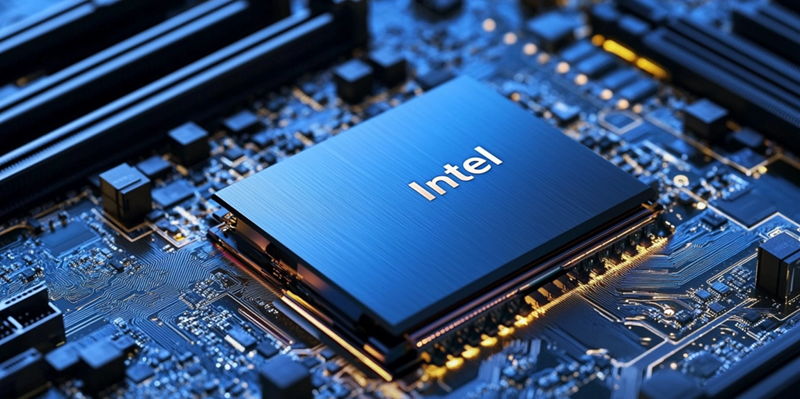Intel is taking proactive measures to support its forthcoming Xe3 GPU architecture, codenamed Celestial, within the Linux operating system, far ahead of the anticipated deployment date in late 2025. By investing in early groundwork for Xe3 drivers, Intel aims to ensure that Linux-based systems will be ready to integrate these advanced GPUs as soon as they hit the market. This early initiative underscores Intel’s commitment to future-proofing its product lineup and maintaining a competitive edge in the ever-evolving GPU technology landscape.
Intel’s Strategic Emphasis on Future-Proofing
Early Investment in Xe3 Drivers
Intel’s decision to commence development on Xe3 drivers reflects a strategic emphasis on preparing for future technology needs. Although their second-generation Arc graphics, dubbed Battlemage, have just been introduced as part of the Lunar Lake laptops as the integrated GPU, Intel’s engineers are already focused on the next leap. This forward-thinking approach is not just about staying ahead of the curve; it’s about setting the curve. By laying down the infrastructure within the Linux kernel now, Intel is making a clear statement that innovation and preparation go hand-in-hand.
While most companies might focus narrowly on current products, Intel’s long-term vision is evident. By prioritizing the compatibility of their future GPUs with existing systems, they ensure a smoother transition when these technologies finally become available. The intention isn’t just to create a high-performance GPU but to create a GPU that can fit seamlessly into a wide range of applications and systems. This means future users of Xe3 will benefit from a mature and optimized software environment right from the outset.
Emphasis on Low-Power Modes (LPM)
One of the noteworthy aspects of Intel’s new driver code for Xe3 involves a pronounced focus on low-power modes (LPM). This aligns with a broader industry trend that prioritizes energy efficiency, especially important as devices become more powerful and feature-rich. The emphasis on LPM is not an afterthought but a core aspect of Intel’s strategy for the Xe3 architecture and future GPUs. The technology world is rapidly leaning towards sustainability, and this move positions Intel favorably in that regard.
Low-power modes are essential not just for extending battery life in mobile devices but also for ensuring that power consumption is managed effectively across various applications. Whether it’s gaming, professional graphics work, or casual computing, an energy-efficient GPU can reduce operating costs and improve user experiences. By making LPM an integral part of their driver development for Xe3, Intel is catering to current market demands while paving the way for future innovations.
Roadmap to Xe3 and Beyond
Lunar Lake and Arrow Lake Mobile Processors
Intel’s work on enhancing integrated GPUs is evident in their efforts with Lunar Lake and Arrow Lake processors, which are projected to show substantial graphics performance improvements. These processors aren’t just about incremental upgrades but signify a leap in integrated GPU capabilities. The Lunar Lake processors, already benefiting from the Battlemage GPUs, offer significant insights into the direction of Intel’s architectural advancements. When Xe3 finally arrives, it will stand on the shoulders of these advancements, offering even more refined and powerful graphics solutions.
With Lunar Lake processors already making waves, Intel’s focus on Arrow Lake further solidifies their commitment to leading the market. Arrow Lake processors, expected to follow closely behind Lunar Lake, promise even more substantial improvements. This phased approach ensures that each generation builds on the previous one, allowing Intel to incorporate new technologies and optimizations learned from the deployment of earlier architectures. In essence, Intel is constructing a robust ecosystem that continually evolves, setting new standards for integrated graphics performance.
Anticipation for Discrete Celestial GPUs
While there is keen anticipation surrounding the discrete Celestial GPUs, it’s evident they remain a few years away given that the discrete Battlemage GPUs have yet to be launched. This calculated and methodical planning approach is indicative of Intel’s commitment to ensuring that each product is fully optimized before it hits the market. Such thoughtful development is crucial for maintaining consumer trust and ensuring the reliability and performance of their GPUs.
Discrete Celestial GPUs, when they do arrive, are expected to bring groundbreaking changes in graphics technology. Intel’s steps in refining Xe2 infrastructure for these forthcoming GPUs are indicative of a broader strategy focused on extending the capabilities and efficiencies already laid out. By concentrating on low-power optimizations and enhanced performance, Intel is preparing these GPUs for a market that increasingly values both power and efficiency. The result is likely to be a well-balanced product that stands out in both consumer and professional applications.
Conclusion
Intel is strategically preparing for the integration of its upcoming Xe3 GPU architecture, known by its codename Celestial, into the Linux operating system well before its expected release in late 2025. By investing in the early development of Xe3 GPU drivers, Intel is making sure that Linux-based systems will be seamlessly compatible with these cutting-edge GPUs the moment they become available. This foresight is part of a broader approach by Intel to future-proof its line of products, ensuring that they remain at the forefront of GPU technology in a rapidly advancing market.
The Xe3 GPU architecture represents a significant leap for Intel, promising to deliver high-performance capabilities that are essential for modern computing needs. The proactive focus on Linux compatibility also signifies Intel’s recognition of the growing importance of open-source software in the technology ecosystem. Intel’s move to prioritize Linux driver support so early in the development cycle demonstrates a clear understanding of industry trends and a commitment to catering to a diverse range of users, from gamers to professionals relying on robust GPU performance. This strategy is not just about maintaining a competitive edge; it’s about setting a standard for excellence and readiness in technological advancements.

